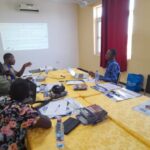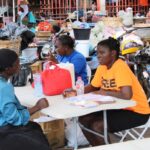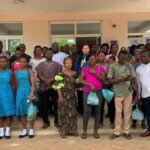In facilitating the achievement of objective three of Ghana Strengthening Accountability Mechanisms (GSAM) project notably “to build Civil Society Organizations (CSOs) and citizens’ capacity to monitor MMDAs development projects in 50 districts”, LRC on Monday 6th June, 2016 embarked on a dissemination exercise of the Ghana Audit Service (GAS) performance score cards. The exercise covered 25 selected communities of the Sawla-Tuna Kalba district. It forms part of the efforts in improving local governance capital projects in the district by enhancing bottom-up social accountability mechanisms through all-inclusive community participation.
Two selected capital projects in the district, notably; 3 classroom block at Tuna and St. Mary`s Dormitory, were assessed by the Ghana Audit Service (GAS). Four (4) assessment areas comprising of project initiation, procurement and contracting, execution and project benefits, formed the center stage of the performance report.
The exercise was geared towards increasing the quality of information available to citizens on the effectiveness and performance of capital projects by the district assembly in the region. This was undertaken with the goal of making the community better understand and have direct access to initiatives funded by the District Assembly`s (DA) capital budgets and to be involved in the process.
The communities covered included Kulmasa, Kanchen, Yipaala, Sanyeri, Tuna and Kong. Others were Saru, Garkon, Kalba, Kunfusi and Norchiiteyiri, under the Kalba Area Council, among others. During the dissemination exercise, Mr. Maxwell Kuu-ire, the Community Development Monitor (CDM) of LRC under the GSAM project, walked each of the communities through their knowledge on social accountability, district assembly processes, capital projects and citizens participation in the decentralization process, among others. With overall score of 48% of the two selected projects, members of each community had an appraisal of the assessment. It was then fathomed by the communities that, the percentage score of 48% was not impressive and that, it was necessary for active inclusion of citizens’ right from project conception to its implementation and even sustainability.




